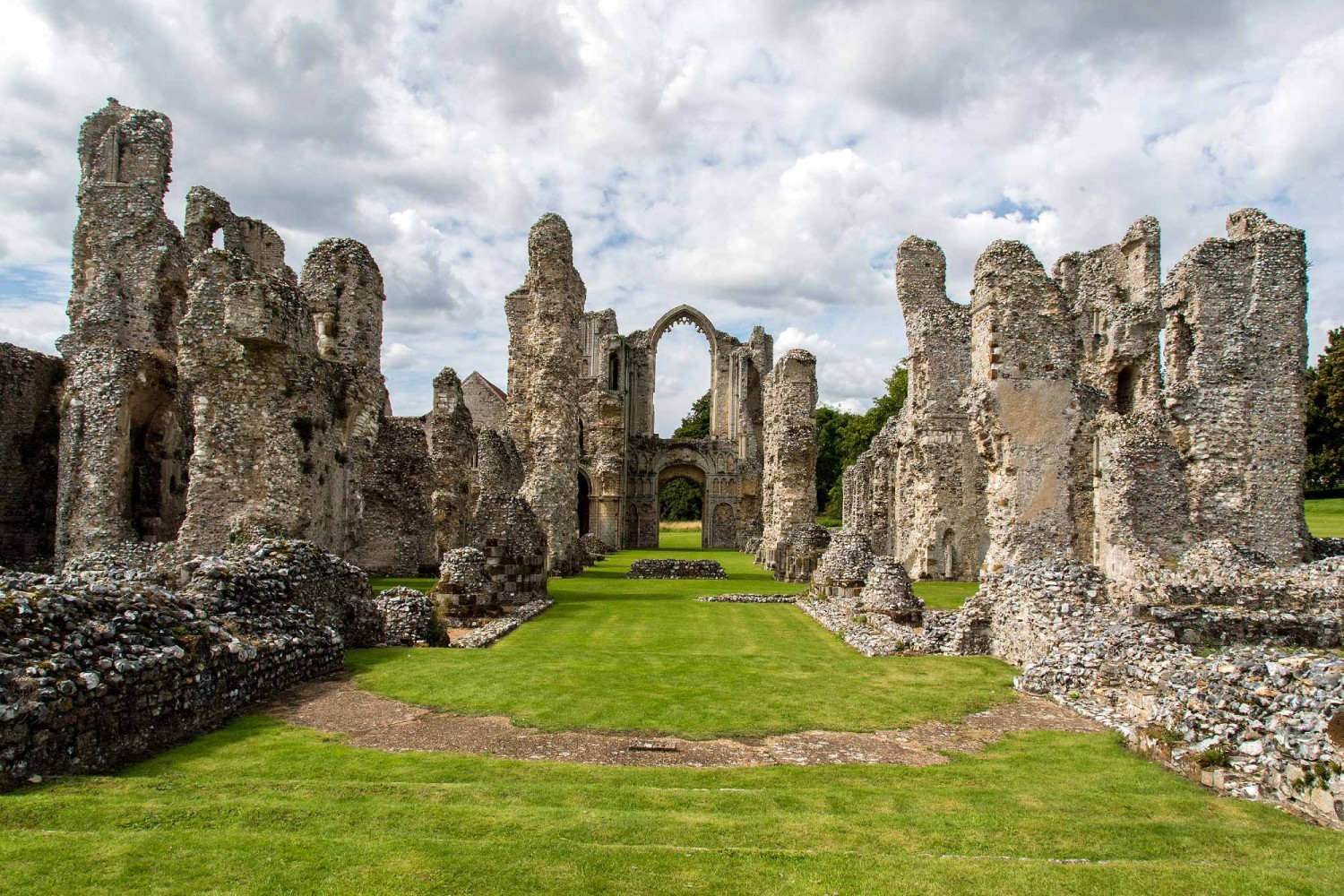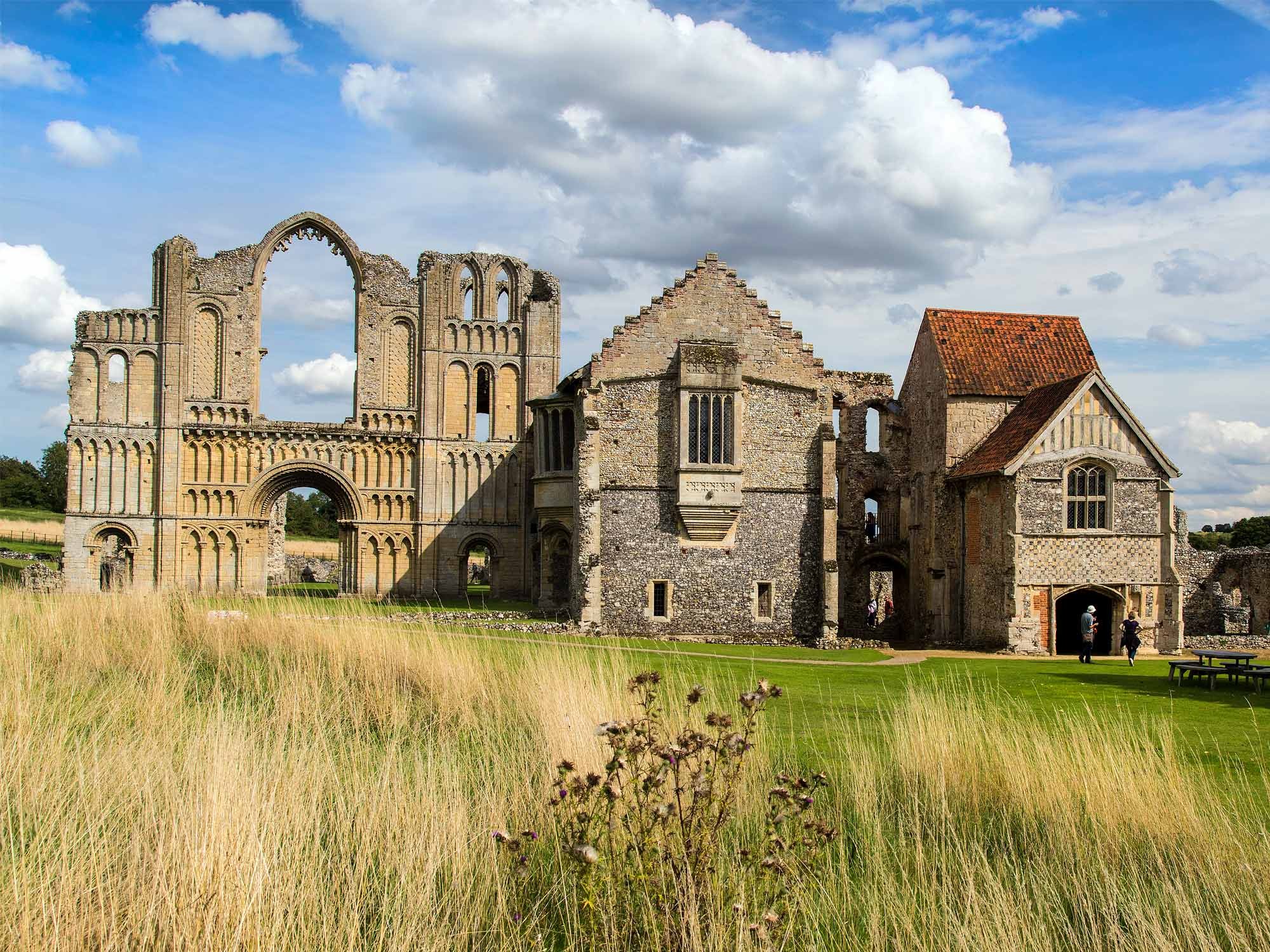
Castle Acre
Castle Acre is one of the most interesting and attractive villages in Norfolk. It stands on the northern slope of the Nar valley in “Norfolk’s Holy Land” which abounded in religious houses before the Reformation.
The land was granted to William de Warrenne by William the Conqueror, and the family built an elaborate country house on the site which was converted in the mid-12th century into one of the grandest motte-and-bailey castles in England. Controlling the Peddar’s Way and the Nar Valley, it was a powerful statement of Norman ambition.
The whole early town was comfortably enfolded with a ditched and walled enclosure. Through the bailey gate which arches over the road today came lords, knights, soldiers, artisans, workmen and country folk.
The village’s Main Street is a diversion of the Peddar’s Way, and Pales Green was probably the original market dating to around 1100.
The Cluniac Priory was built by William de Warrenne’s son in about 1090 and was home to 30 monks and numerous lay people – easily afforded by the wealthy monastic order which became even richer through gifts and endowment of land. But this conspicuous consumption made them (and other wealthy monasteries) progressively less popular, and in reaction Friaries were founded which renounced wealth and subsisted on charity.
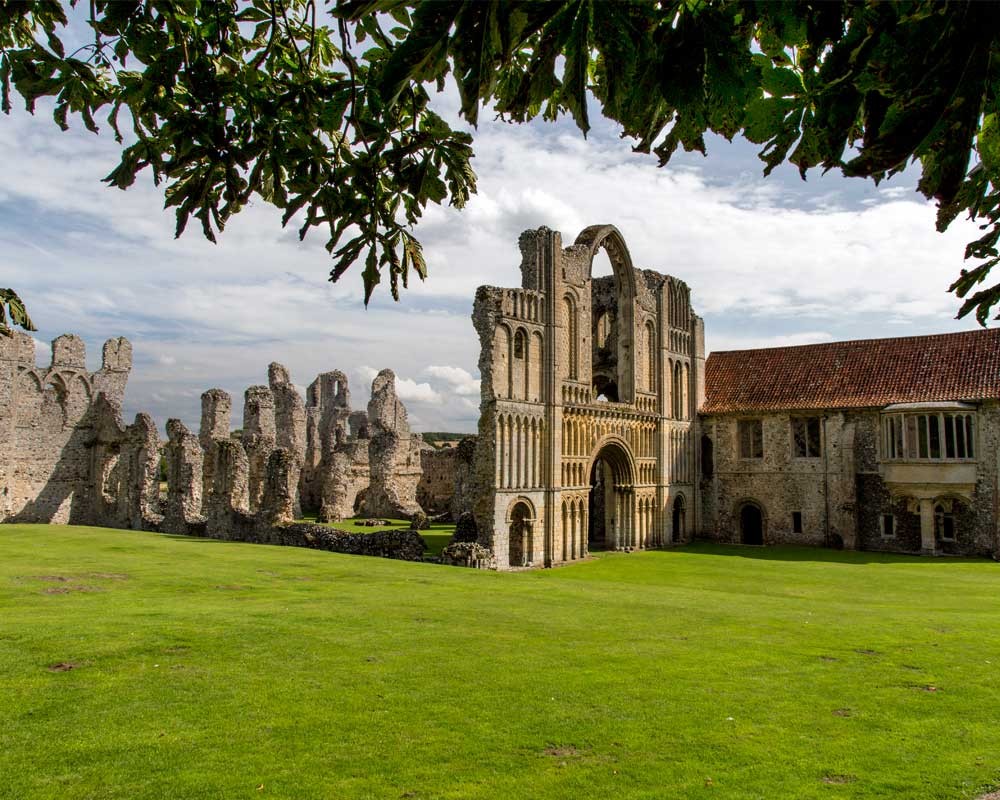
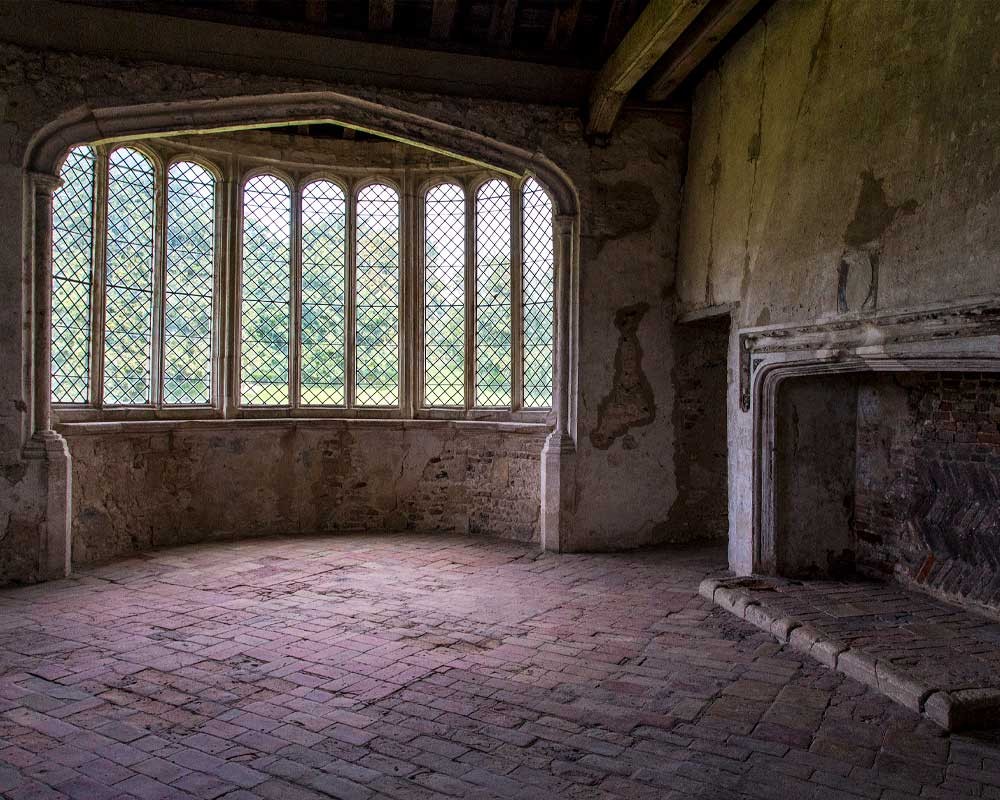
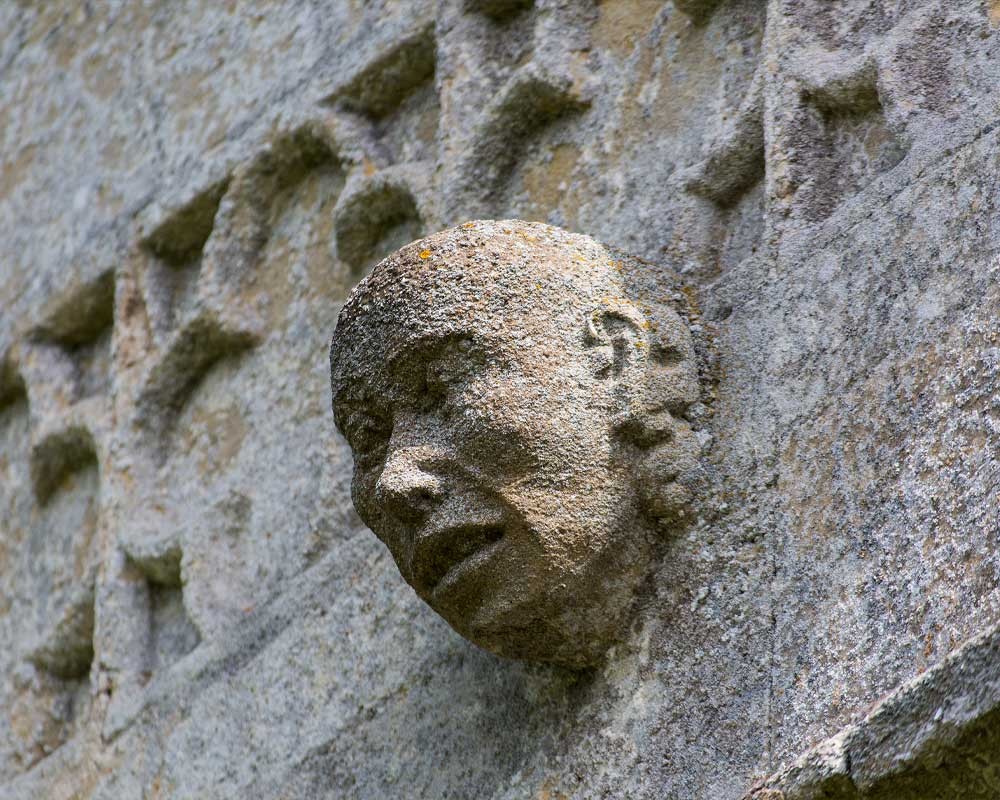
The priory at Castle Acre continued to add to its buildings nevertheless, with a magnificent gateway built around 1500 which now opens onto a 36-acre sweep of lawns and a delightful Tudor house – which was the priors’ lodging. English Heritage now care for these partly ruined survivals.
A nice little story concerns the fate of the village after the Reformation, when Lord Chief Justice Edward Coke (the ancestor of Lord Leicester, who is today the Lord of the Manor) approached Elizabeth I asking if he could buy more land.
The Queen was determined that no subject should have too much power and prevaricated until Coke said “just one more acre would satisfy him.”
The Queen agreed, and that acre was the village of Castle Acre.
Today, it’s a wonderful picturesque village with winding streets lined with lovely carrstone and flint cottages interspersed with substantial houses.
Castle Acre also boasts a 16th century coaching inn with log fires and a firm emphasis on locally-sourced, free-range produce – and there are also two shops selling eats, treats and crafts.
